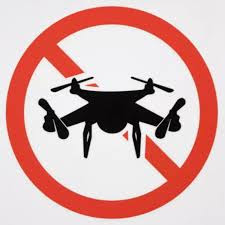Myanmar resistance has announced that it has overcome junta anti-drone jammers
The use of unmanned aircraft by anti-regime groups to target military forces is becoming increasingly prevalent.
Rebel groups and drone operation groups have stated that resistance fighters in Myanmar are now turning to drones as a crucial tool in their attacks against Myanmar military forces. This shift in strategy comes after successfully overcoming the junta's anti-drone jammers, allowing them to effectively utilize this technology in their fight for freedom.
Ko Nyein, the leader of Cloud Wings, a rebel drone force in Kayin state, eastern Myanmar, has reported a significant improvement in the performance of their drones.
He mentioned that their drones are now capable of carrying increased payloads, achieving higher altitudes and longer distances, and effectively countering the junta's signal jammers. Moreover, he emphasized the wide range of military applications their drones can now serve across different columns in Myanmar.
In 2022, rebel forces carried out approximately 642 drone attacks targeting junta soldiers, as reported by three separate drone forces operating in Kayin and Kayah states, as well as Sagaing and Magway regions.
The National Unity Government has reported an increase in the use of drones this year, as stated by militia groups operating under their influence. However, due to security concerns and the sensitivity surrounding military affairs, they were unable to provide specific details.
As of now, none of the groups have released any statistics regarding the number of drone attacks that have taken place this year.
Drone operators have reported that the People's Defense Forces (PDFs) and ethnic militias, comprised of regular citizens, are utilizing advanced warfare technology to confront the military forces that seized power in the 2021 coup. In response to the junta soldiers' deployment of machine guns and anti-drone defense equipment at strategic military bases, the PDFs and ethnic militias have adapted by employing modern-day drone technology.
Initially, the insurgent combatants depended on artisanal armaments, such as tumees, hunting rifles, launchers, and bombs, to confront the forces of the national military.
According to PDF personnel, the utilization of a greater number of attack drones capable of deploying bombs has increased since the successful defeat of the junta's anti-drone defense system.
According to Maung Maung Swe, the deputy secretary of the Ministry of Defense of the National Unity Government, a group of former civilian leaders and anti-junta activists has provided over 400 attack drones to various loosely controlled militia groups.
The RFA was informed that the weaknesses and strengths of the junta's drones are well-known to us, and we can now effectively neutralize them. Our knowledge of the wifi jammers' frequency has made it easy for us to infiltrate them throughout the country.
Cost of bombs
Ko Nyein reported that the Cloud Wings drone force, established in Kayin state in March, has successfully carried out over 100 drone operations against the junta.
Ko Nyein highlighted that the exorbitant expenses associated with the different bombs affixed to the drones have posed a significant obstacle.
He stated that the primary challenge we encounter revolves around the expense associated with the bombs.
The police station and municipal hall in the city of Kyainseigyi were targeted by the Cloud Wings drone unit on two separate occasions, September 1 and During these attacks, a total of 107-mm bombs were dropped.
The following day, the police station in Kayin's Myawaddy city was targeted by the Federal Wings, a separate resistance faction employing drones to launch attacks on the junta's troops and installations. This act resulted in the loss of five lives, including the district administrator of Myawaddy and the acting commander of the junta's Light Infantry Regiment No. 175. Additionally, an undisclosed number of individuals sustained injuries during the incident.
Capt. Kaung Thu Win, a member of the nationwide Civil Disobedience Movement, expressed concern over the increasingly strategic nature of these drone attacks, which pose a threat to the junta.
The speaker stated that in previous times, military personnel were frightened by landmine assaults during their missions. However, presently, the most intimidating weapons for them are drones, which can be utilized for both defensive and unexpected attacks at any time of the day or night.
He further stated that the military troops were considerably impacted by the bombs released from our drones, although they are incapable of completely eliminating an entire enemy unit.
Attack from a distance
According to Kaung Thu Win, the Drone Guard equipment used by the junta to counter drones is inadequate and several soldiers stationed at bases are not proficient in operating it.
The Civilian Defense and Security Organization of Myaung, a resistance group, launched an attack on junta troops stationed near Sagaing region's Nat Yay Kan village in Chaung-U township on Sept. 1Utilizing fixed-wing drones, they managed to bypass the military jammers, which are designed to disrupt radio waves and hinder drone control.

